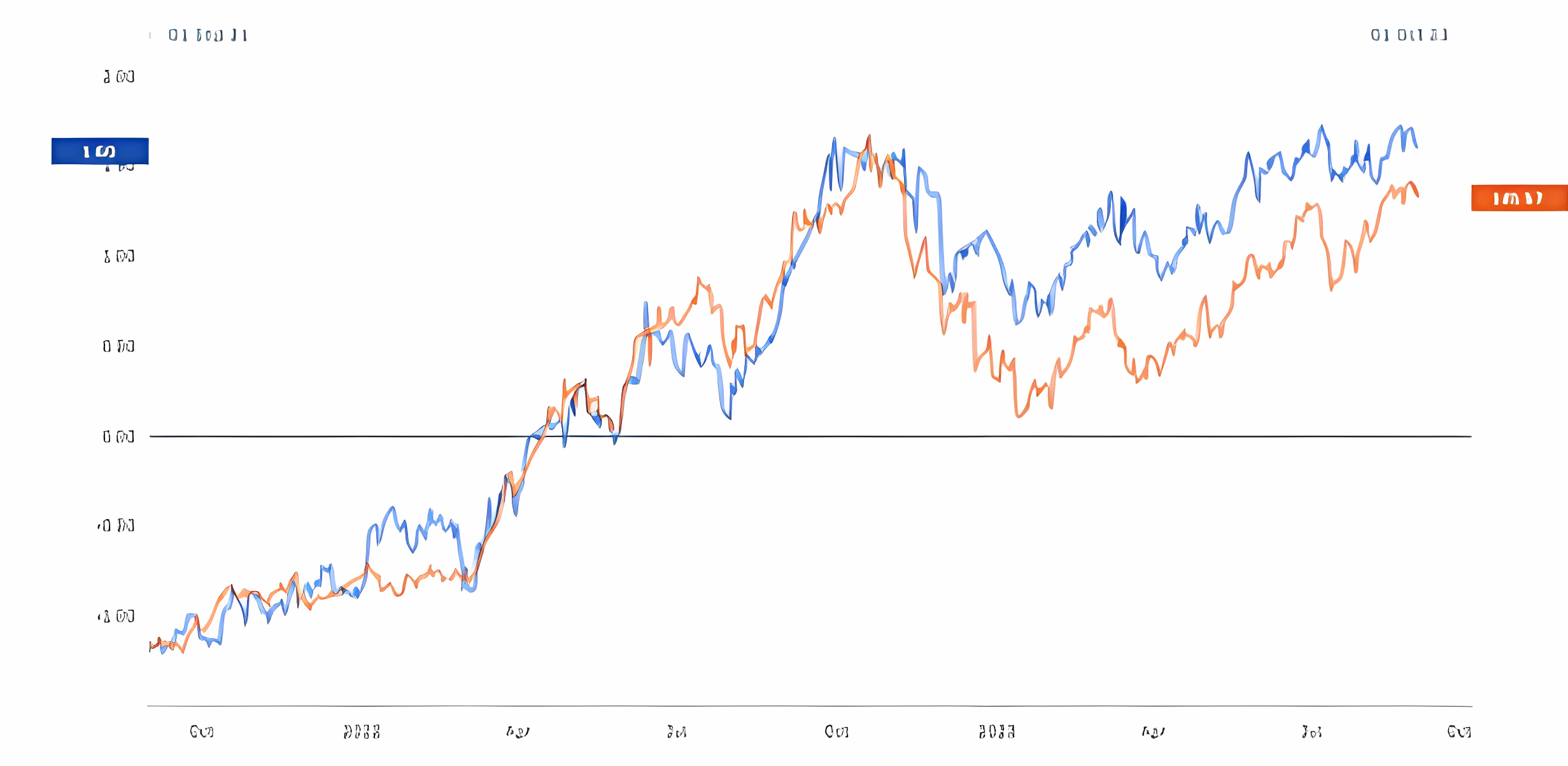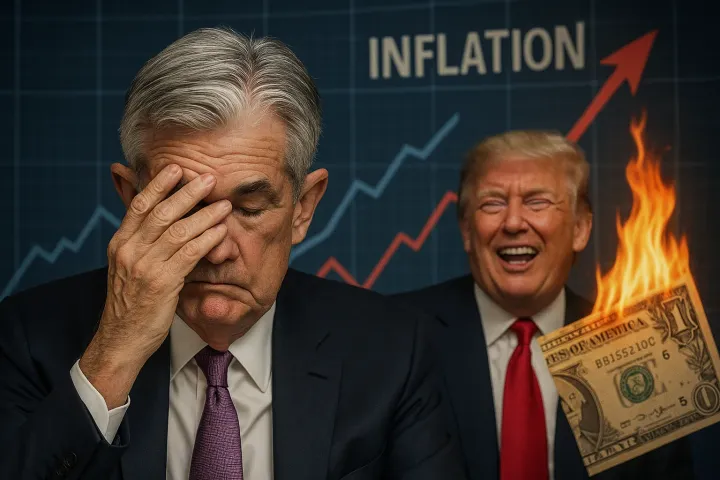The Carry Trade and USDJPY: What You Need to Know

USDJPY forecast upgrade to 150 & 155 in 3-6 months, respectively. If you're unfamiliar with forex terms "base" and "quote," this forecast means the US dollar will go up against the yen.
Higher for Longer
The main reason for this bullish view on the USD dollar is that the interest rates remain "higher for longer" than previously anticipated, meaning they will either keep their interest rates higher for longer and make no rate cuts. as the Federal Reserve continues to tighten its monetary policy in response to strong economic growth and inflation pressures.
Higher interest rates often attract foreign investments looking for the best return on investments in the safest assets, which strengthens the currency
So, the Federal Reserve will likely keep interest rates high or hike again to combat inflation and cool down the economy. Higher interest rates generally strengthen a country's currency.
Negative Interest Rate Policy (NIRP) in Japan
The Global Investment Research division at Goldman Sachs expects the Bank of Japan to continue its negative interest rates policy (NIRP).
Negative interest rates typically make a currency less attractive to investors because they essentially have to pay to hold the currency. This discourages foreign investment in the yen and weakens it.
Real rate differential
The difference between the US and Japanese interest rates is also known as the "real rate differential". The real interest rates adjust the nominal interest rate set by central banks for the rate of inflation, giving a more accurate picture of the actual return an investor would earn by investing in the currency.
It's a key driver of the USDJPY exchange rate, as it reflects the relative attractiveness of holding one currency over another.
Higher real interest rates typically attract foreign investment. If the U.S. has a higher real interest rate than Japan, then investors are more likely to invest in U.S assets because they can earn a better "real" return on their investments compared to what they could get in Japan.
Because higher real interest attracts foreign investment, they also usually benefit from a stronger currency. If more people want to invest in the U.S., they have to buy dollars to do so. That increases demand for the dollar and strengthens it relative to other currencies like the yen.
The real interest rate isn't just important for investors, it's also important for anyone who borrows or lends money. A higher real interest rate in the U.S. means that loans are more expensive, and savings accounts offer better returns relative to what's available in Japan.

Impact USDJPY
If the real interest rates in the US rise or Japan's fall, the USD will likely strengthen against the JPY due to the widened real rate differential.
Higher U.S. real interest rates attract investment into dollar-denominated assets, requiring investors to buy USD and sell JPY, further supporting the dollar's strength against the yen.
Forecasting USDJPY often involves predicting what will happen with the real rate differential, which is influenced by each country's monetary policy and economic outlook.
The USDJPY exchange rate is driven by the "real rate differential", which compares the real returns in the U.S. versus Japan.
If they can get a higher real return in the U.S then they're more likely to invest there, which also increases demand for the U.S. dollar and strengthens it against the Japanese yen.
Are you a premium member of the newsletter but still didn't join Discord?
(Also article does not end here)
Join Discord to get the full value out of the newsletter. There's no extra cost associated with Discord. Yes, options data, such as dark pools, unusual flow, etc., are also included.

The Carry Trade
A "carry trade" strategy involves borrowing money in a currency with a low-interest rate and then using the borrowed money to invest in a currency with a high interest rate.
The trader "carries" the trade from the low-interest rate environment to the high-interest rate environment.
The yen (JPY) is the low-interest-rate currency. Investors would borrow yen because it's cheap to do so (thanks to the interest rate set by the Bank of Japan).
The U.S. Dollar (USD) offers higher interest rates. Investors would then convert the borrowed yen into dollars and invest in dollar-denominated assets like bonds, offering higher returns.
The idea is to profit from the difference in interest rates between the 2 currencies. If you're borrowing at a 0% rate but investing at a 2% rate, you'd earn the difference (minutes transaction costs)
The Carry strategy can be even more profitable if the high-interest-rate currency (USD in this case) appreciates against the low-interest rate (JPY). That's because when you close the trade, you would be converting the bank to yen at a more favorable rate.
However, the carry trade in USDJPY is offering around multi-year highs in terms of returns. The strategy is particularly lucrative right now due to the interest rate differential and/or the appreciation of the USD against the JPY. Is it overcrowded? Yes

Sounds familiar?
https://youtu.be/EUU-MAEuihw?si=7-nJGNojbkQHQwOH

Risks of the Bank of Japan Intervention
Central banks sometimes intervene in the foreign exchange market to influence their own currencies' value.
So, the Japanese government or the Bank of Japan could intervene in the foreign exchange market.
A strong yen, however, is bad for Japanese exports because it makes Japanese goods more expensive for other countries to buy.
However, trading partners frown upon currency manipulation, so Japan is pressured not to intervene, especially by the U.S.
According to the Research division from Goldman Sachs, Japan will unlikely intervene unless the USDJPY goes significantly above 150. The political costs of intervention, especially from the U.S., would make this a less likely scenario
While there's always a chance that Japan could intervene to bring down the value of the yen, the current sentiment suggests this is unlikely unless the exchange rate rises a lot more.
Positioning for Faster BoJ Policy
The Bank of Japan is possibly moving away from its unconventional monetary policy, such as negative interest rates or large-scale asset purchases, and more towards a "normal" or traditional policy stance. That means hiking rates or reducing asset purchases.
The Federal Reserve might cut interest rates in the second half of 2024.
European Central Bank is expected to maintain its currency policy stance without large changes after September.
GS research division believes that the BoJ will take a longer time to normalize its policy.
However, some contrarians believe that there's a window in the first half of 2024 for the BOJ to move quickly towards policy normalization ahead of the anticipated rate cut by the Federal Reserve later that year.
Why the first half of 2024?
The idea is that if the BoJ is going to normalize policy, doing it before the Fed cuts rates would be strategically beneficial.
The Bank of Japan could prevent the yen from going up too much against the U.S. dollar if they act before the Fed cuts rates. If the BoJ normalizes earlier, it would have more flexibility in the future, including more options if economic conditions change. This could be done by raising rates or reducing asset purchases earlier.
Sometimes, central banks act to align with market expectations. If there's a significant market expectation for BoJ tightening, then not doing so could create market volatility.
While the focus here is on the currency and exports, the BoJ must also consider domestic factors like inflation and financial stability.
Japan Additional info
Women Labor Force Participation: The high labor force participation rate among women (at 74%) is pointed out as a notable demographic feature.
- Baby Boomers: People born in the 1950s will start turning 75 by 2025. As these individuals retire, they'll exit the labor market.
- Structural Change in Wage Growth: As more women enter the workforce and the older generation retires, there will be changes in the wage structure due to demographic shifts. A decrease in labor supply typically leads to higher wages, which can drive inflation upwards.
The difference in interest rates between the U.S. and Japan and the Bank of Japan's Quantitative Easing (QE) program has kept the USDJPY exchange rate high. This means the U.S. dollar remains strong against the yen.
- 2% Inflation Goal: The BoJ aims to achieve a 2% inflation rate sustainably.
IF the Federal Reserve plans to lower interest rates from 5.5% to 3.5% by mid-2024. This could cause the U.S. dollar to weaken and the yen to strengthen. If the Bank of Japan wants to reach its 2% inflation goal, a stronger yen could make it harder to do so because it could result in lower prices. The Bank of Japan has only 6-9 months to change its policies before the expected U.S. rate cuts.
USDJPY Trading Strategy
Call Fly set to expire December 15
- Buy one 148-strike call option
- Sell two 152-strike call options
- Buy one 156-call option with a Knock-in feature at 156
If USDJPY rises but stays close to 152 by December 15, the options you sold will expire worthless, which is good because you sold them, and the 148 call option you bought gained value
If USDJPY falls too much or rises too far, we might not make a profit but your losses are limited to the premiums paid to set up this option trade.
Okay, now you've got this fancy trading setup called a Seagull structure, which is a type of options strategy. You're betting on how the USDJPY currency pair will move.
Your bet has three key numbers: 148, 152, and 156. The whole deal expires on December 15th.
Now, the 156 part has a special rule. It only kicks in if the actual exchange rate hits 156. That's what "Knock-In" means.
You're interested in knowing how much money you could make (or lose) at three different times before everything expires: 2 months before, 1 month before, and 2 weeks before December 15th.
So, you're basically checking to see how this Seagull setup could pay off when the exchange rate is at different levels at those specific times. You're likely going to calculate the profit or loss in percentage terms to see if this strategy is worth it.



